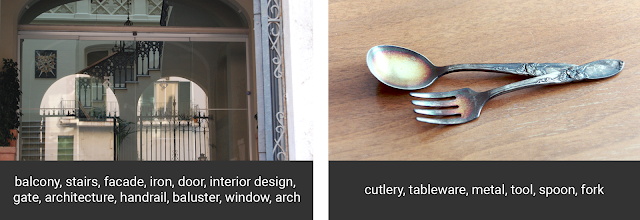Last month Google made an
announcement unveiling support for Visual Studio, C#, PowerShell, Microsoft SQL Server and more on the
Google Cloud Platform. With so many new features, it is easy to gloss over some of the technical aspects of the announcement, especially the fact that all of the developer tooling and libraries are open source and available on GitHub.
This post will go into some of the details behind the new C# libraries, PowerShell cmdlets, and Visual Studio extension. All three products are open source, have an exciting roadmap for the future and are hungry for your feedback.
C# bindings for Google APIsSource:
https://github.com/googlecloudplatform/google-cloud-dotnetDocs:
https://cloud.google.com/dotnet/For years, Google has had innovative technologies powering its data centers, unfortunately Google’s internal APIs and technology couldn’t directly benefit you and your software. That was, until the Google Cloud Platform started
exposing public APIs for things like machine learning, storage, logging etc. With these APIs publicly available, you can add powerful capabilities to your apps without needing to manage complex infrastructure.
There have been
C# bindings for Google APIs for years. In fact, Google receives
hundreds of millions of API calls from C# clients every day. But newer APIs, especially those from the Google Cloud Platform, require more advanced features like bidirectional streaming. That’s why rather than using HTTP/REST many newer Google APIs are built on top of
gRPC, a high performance, open source universal RPC framework.
But don’t worry, we have C# bindings for those gRPC-based APIs too; all of it open source and on GitHub.
In both cases, the client library is the result of a C# code generator. We take the API’s discovery document (analogous to a
WSDL) and generate C# code. gRPC APIs require more careful design than other APIs, but the end product is the same. Once built, the API libraries are published to NuGet.
C# code generators for Google APIs isn’t the entire story.
Source code generated from tools can look foreign at times. So for libraries where the codegen isn’t good enough, we have hand-written wrappers to provide a better, more idiomatic experience. In some cases -- such as CRUD operations using the
Datastore API -- the hand-written library cuts down on the required lines of code by half.
Finally, support for C# doesn’t just mean code. We are also working to ensure Google APIs are supported on different runtimes too. Most Google APIs work on the cross-platform
.NET Core runtime and we are continuing to expand support.
PowerShell supportSource:
https://github.com/googlecloudplatform/google-cloud-powershellDocs:
http://googlecloudplatform.github.io/google-cloud-powershell/C# support is great when you are writing full applications, but for DevOps, scripting is more typical. The
Cloud SDK provides command-line tools (
gcloud,
gsutil) for managing cloud resources, but when running on Windows, Windows PowerShell is a
dramatically more productive environment.
Google Cloud tools for PowerShell is a set of cmdlets so you can manage your Google cloud resources. They are strongly typed, and integrate seamlessly with other PowerShell tools. For example, to learn more about a cmdlet, just use Get-Help.
In designing the PowerShell cmdlets, the main goal was to be idiomatic. We wanted to follow the best practices and guidelines so PowerShell novices and pros alike could use our cmdlets. Of course, if we have anything wrong, please log an
issue on the GitHub repository. Pull requests are also welcome.
Visual StudioSource:
https://github.com/googlecloudplatform/google-cloud-visualstudioDocs:
https://cloud.google.com/visual-studio/The C# and PowerShell features should help developers using Google services. But the biggest impact on developer productivity comes from being inside the Visual Studio IDE.
From within Visual Studio you can search for new extensions and find the
Google Cloud Platform Extension for Visual Studio. It provides tools for viewing/managing data stored in Google Cloud Storage and Google Cloud SQL. It also provides support for deploying ASP.NET 4.x applications to Google Compute Engine.
It is only the first release and we have some big plans for the future. You can see a lot of the short-term features we have planned by looking at the
issues list in GitHub. Like making Google APIs light up for the new .NET Core runtime, being able to deploy ASP.NET Core applications to Google App Engine or Google Container Engine will be huge. Stay tuned for a future blog post about how to run C# on
Google App Engine Flexible Environment, as well.
We’re just getting startedHopefully you share my enthusiasm for Google’s ongoing development in .NET tooling. Not only is it exciting to be able to take advantage of Google Cloud Platform technologies, but also to see a future where .NET Core enables C# code to run cross-platform.
But to be successful we need your help.
If you have questions, be sure to ask on Stack Overflow (e.g. the
google-cloud-visualstudio or
google-cloud-powershell tags). If you have problems, please open issues on GitHub (
libraries,
VS,
PowerShell). If you still have trouble, participate in the
google-cloud-dev group.
The team here at Google is thrilled to be working with the .NET stack and your feedback is immensely helpful in prioritizing things.
By Chris Smith, Software Engineer









